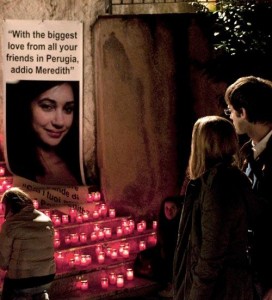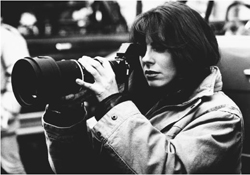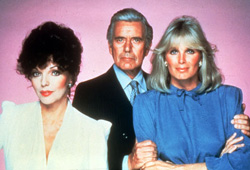 After the fuss last month about the Kennedys mini-series, another movie based on a true story has hit the headlines. This time it’s the turn of the Lifetime Movie Network’s rendering of the Meredith Kercher/Amanda Knox story to attract tabloid ire, thanks to some insensitive comments made by its star, Hayden Panettiere. On playing Knox, who was convicted of the sexual assault and stabbing of her room-mate in 2007:
After the fuss last month about the Kennedys mini-series, another movie based on a true story has hit the headlines. This time it’s the turn of the Lifetime Movie Network’s rendering of the Meredith Kercher/Amanda Knox story to attract tabloid ire, thanks to some insensitive comments made by its star, Hayden Panettiere. On playing Knox, who was convicted of the sexual assault and stabbing of her room-mate in 2007:
“You know, she’s a real person. She was a young girl who had dreams and aspirations and was going to Italy to go to school and to broaden her horizons and have experiences and meet new people. And I don’t think that guilty or innocent takes away from that… This is such a vulnerable story, and specifically, Amanda was so needy… My job was to play a girl who, regardless of what happened, was innocent in who she was. She’s not a malicious girl. She didn’t have any intention to do this. This wasn’t an angry or dark girl… Whatever it was that happened that night, people’s lives were ruined. But it was my job to stay pretty true to form in who she seemed to be as a person in court and otherwise.”
The families of both the victim, Meredith Kercher, and Amanda Knox are opposed to the film airing. Knox’s appeal comes up next month, and her legal team feel the inaccuracies in the movie trailer may be prejudicial to that hearing. They’re seeking a broadcast ban.
The Lifetime Movie Network, founded in 1998, mines a rich tradition of true crime ‘movies of the week’, and has always aimed them specifically at a female audience. SVP Tanya Lopez said in a 2009 interview:
“Women like true stories… Women like things that are authentic and that they can learn from. We don’t just do a ‘ripped from the headlines’ movie. We tell the story behind the story, from a female point of view… We’re reporting the emotion and the drama behind the characters. The facts are important to us and we do use them as a blueprint, but what we care about is the dramatic emotional story.”
Although Lifetime haven’t yet formally responded to the fuss, it’s likely that the producers will claim their First Amendment right to interpret the facts as creatively as they see fit, no matter how sleazy, sensationalist and fallacious others might perceive that interpretation to be. That’s entertainment for you, especially entertainment aimed at women, who aren’t meant to be as particular about media accuracy and integrity as men.
Knox Family wanted Hayden Panettiere to Meet Knox in Prison – ABC News
Hayden Panettiere defends vile Meredith Kercher murder film – The Sun
Amanda Knox: Murder on Trial in Italy – Lifetime Movie Network
True Stories Offer Cable a Lifetime of Hit Movies– NY Daily News (2009)




